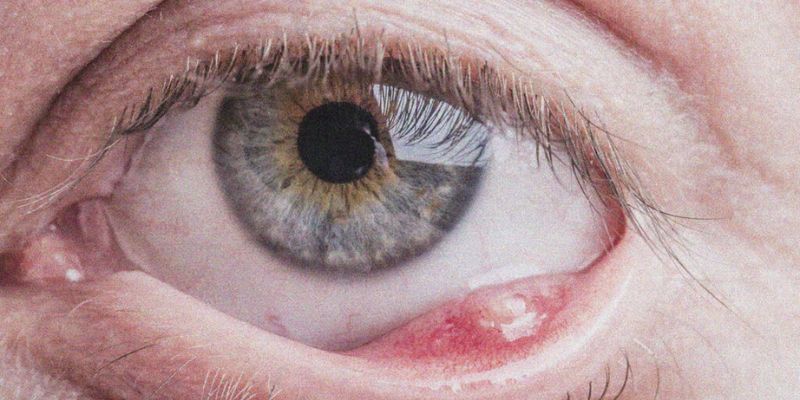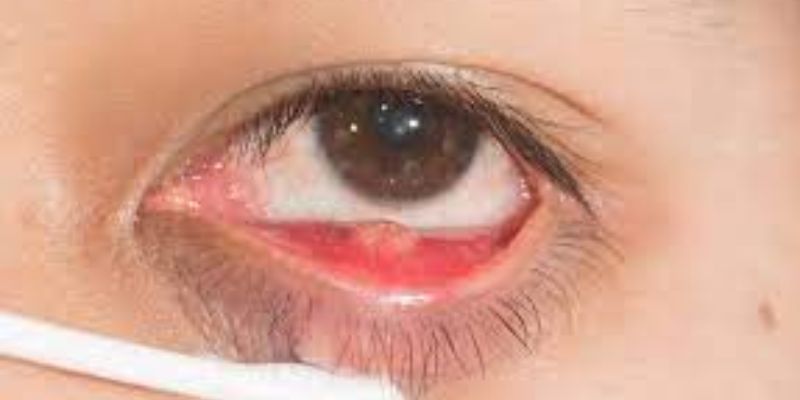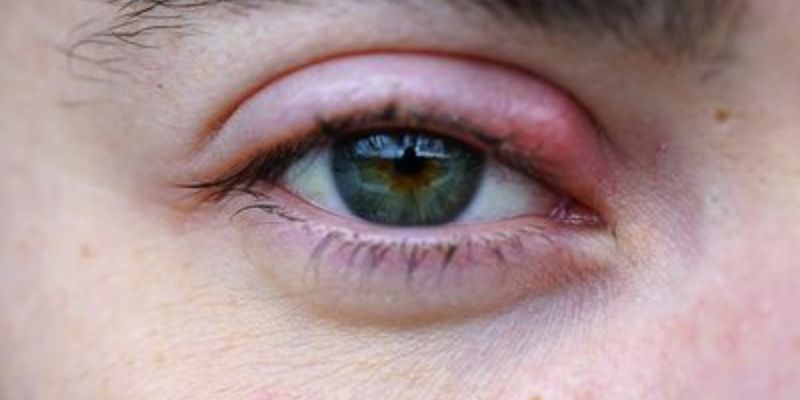Have you ever woke up with a painful feeling inside your eyelid or noticed an unsightly bump on the edge of your eyelashes? If so, the culprit may very well be what’s known as a stye.
Stye forms when there is an infection in one of the glands located within the eyelid, and for many people, this can result in swelling, itching, burning, and general discomfort around their eye area. We will discuss all aspects of what exactly is a stye inside the eyelid, including its causes, symptoms, and traditional forms of treatment.
Stye Inside The Eyelid

A stye, also known as a hordeolum, is an infection of the oil-producing glands within the eyelid. Styes typically form when bacteria enter these glands and cause inflammation. The result is a swollen bump on the upper or lower lid that may be filled with pus.
Other common symptoms include redness, itching, burning sensations, tenderness in the affected area, and general discomfort around your eye. While these symptoms can range from mild to severe depending on the individual case, they are typically uncomfortable.
Symptoms of a Stye Inside the Eyelid

The most common symptom of a stye inside the eyelid is swelling and tenderness. Other symptoms include redness, itching, or burning sensations around the affected area and general discomfort in the eye region.
It is common for eyes to tear up and feel light-sensitive. People may also experience blurred vision, discharge from the eye, or pain when attempting to move or touch the eyelid.
How to identify a stye?
Styes can be identified by their appearance. They typically appear as red, swollen bumps on the upper or lower eyelid and may be filled with pus. It is common for styes to be itchy and tender to the touch. They may sometimes look like pimples due to their similar size and shape.
It is important to note that style can also occur in other face areas, such as near your eyebrow or temple area. If you notice any lumps or bumps developing along your eye region, it is best to see a doctor as soon as possible to determine if it is a stye and how severe it may be.
Causes A Stye Inside The Eyelid
Bacterial Infection
Styes are most commonly caused by bacterial infections, such as staphylococcus aureus (staph).
Poor Hygiene
Not properly caring for your eyelid area can develop bacteria on the lid or in the oil-producing glands.
Eye Rubbing &'' Trauma
Constant rubbing of the eyes or trauma to the surrounding area could trigger a stye.
Hormonal Imbalances
Changes in hormones, especially for women during pregnancy and their menstrual cycle, have been known to cause styes in some cases.
Blocked Glands
Blockages in tiny oil glands around your eye can increase the risk of developing a stye. Glands naturally secrete a thin layer of oil to help lubricate the eye, but when the glands are blocked, they cannot do so.
This can cause them to become infected with bacteria that lead to styes. Common causes of blocked glands include not properly cleaning your face and eyes or wearing makeup for too long without washing it off.
Allergies
Certain allergies, such as those related to cosmetics or contact lenses, can increase the risk of getting a stye in your eyelid. Allergies can cause inflammation, leading to blockages in the oil glands or overproduction of oils that can increase bacterial growth. It is important to be aware of any potential allergies and take steps to avoid them when possible.
Traditional Treatments For A Stye Inside Eyelid
Treatment for a stye inside the eyelid usually involves home remedies and over-the-counter medications to help alleviate pain and reduce swelling. Popular home remedies include warm compresses on the affected area and gently massage it to try and release any pus buildup.
Ointments are also available to treat styes and may be prescribed by your doctor. Additionally, antibiotics can be used in more severe cases or if the infection has spread.
In some instances, a stye may need to be removed surgically. This is typically reserved for particularly severe cases or if the stye does not respond to any other treatment. Surgery is an outpatient procedure and can be done in your doctor’s office.
Risk Factors Stye Inside Eyelid
Kelly develops a style more than others. Risk factors can include:
• Poor hygiene.
• Rubbing or itching of the eyes.
• Hormonal changes, like those experienced during pregnancy or menstrual cycle.
• Allergies to cosmetics or contact lenses.
• Blockage of oil glands around the eye.
• Bacterial infections, such as staphylococcus aureus (staph).
• Diabetes.
• Weakened immune systems, such as those with HIV/AIDS.
• Vitamin A Deficiency.
• Aging – risk increases with age.
How is an Internal Stye Diagnosed?
If you’re experiencing any symptoms associated with a stye inside your eyelid, it is best to contact your doctor for a diagnosis. They will conduct an examination and may swab the affected area to determine the type of infection present. It is also important to let your doctor know about any medications or allergies you have, as this can affect their prescribed treatment plan.
How can I prevent an internal stye?
You can reduce your chances of developing a stye by practicing good hygiene and avoiding contact with people with active stye. Additionally, avoid rubbing or scratching the area around your eyes.
If you wear contact lenses, always follow the instructions for cleaning them and replace them on schedule. Allergies should also be managed properly with the help of your doctor. Finally, if you’re pregnant or experiencing any hormonal changes, speak to your doctor about ways to reduce any associated risks.
Complications of an Internal Stye
If a stye is not treated properly, it can lead to more serious complications. This includes cellulitis, when the infection spreads to other body parts and can be dangerous if left untreated.
Additionally, recurrent styes that keep coming back are known as chalazion and may need to be surgically removed to eliminate them. Finally, vision loss can occur if the infection reaches your eyesight-affecting muscles or inner structures within the eye.
It’s important to note that these complications are rare but still possible with internal styes, so it’s best to seek treatment as soon as possible should you notice any symptoms.
FAQS
How long does a stye inside the eyelid last?
A stye inside the eyelid typically resolves itself within a week or two. However, more severe cases may take longer to heal, and some may experience recurrent styes.
Do eye drops help with styes?
Eye drops may help to reduce the symptoms associated with a stye, such as redness and swelling. However, they are not a substitute for proper medical treatment and should be combined with other methods.
What is the fastest way to stop a stye?
The fastest way to stop a stye is to visit your doctor for treatment. Your doctor may prescribe antibiotics, ointments, or other medications to help reduce the swelling and speed up healing time. They may suggest removing the stye surgically in some cases.
Conclusion
In summary, it is important to remember that a stye within the eyelid can be uncomfortable and irritating. It is best to seek medical advice if you have frequent occurrences of a stye inside the eyelid, as not all cases resolve independently. You can try self-care measures such as cleaning the eye with a warm compress and avoiding picking at or rubbing it to soothe it. However, you should talk with your doctor if symptoms persist for over a week. Following these steps can make your chance of experiencing a stye inside the eyelid less likely, and if symptoms present themselves, then most importantly, you should not delay seeking medical advice and treatment.




